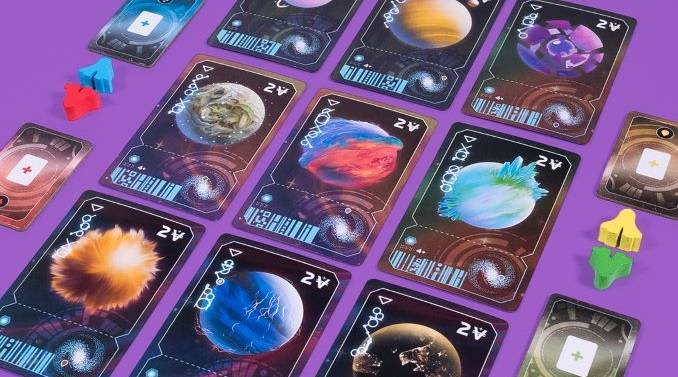Explore the Depths of Space in the Family-Friendly Board Game Wormholes

Wormholes is the newest title from Peter McPherson, the designer of the acclaimed 2019 game Tiny Towns, where players move their spaceships around the board, ferrying passengers from this planet to that one, but where they can also make their return trips a little shorter by building shortcuts through wormholes that anyone can use. It’s a very light, fast-playing game, perfect for playing with your kids, especially if they’re into the space theme.
Wormholes is a pickup-and-delivery game, meaning that players pick up something from one place on the board and bring it to another place on the board. This mechanic is most commonly found in railroad games like Steam (and Age of Steam) and Whistle Stop, but it shows up in games as disparate in themes as Broom Service, Istanbul, and Century: Eastern Wonders. It’s about as simple as it gets in Wormholes—each card you draw during the game shows one of the planets on the board and represents one passenger who wants to go to that planet. Get your ship to any of the spaces adjacent to that planet and you can drop off the passenger for two points, which will account for the bulk of your scoring in the game.
You have three energy tokens to use for movement on every turn, but also have a bunch of free actions you can use at any time. Regular movement (that is, not through wormholes) costs one energy token to move one hex in any direction, and it’s slow progress until everyone gets their wormhole networks up and running. When you’re next to any planet, you can discard any of your cards in hand, deliver any passengers who want to go to that planet, and then draw back up to your hand limit of four cards. None of those actions requires an energy token, and if the board cooperates, you can actually deliver to multiple planets in one turn.
You can also place a wormhole token on the space where your ship is or on any adjacent space as a free action. Each player starts the game with 10 wormhole tokens in their color, five pairs numbered one through five. When you’ve placed both of your tokens of the same number, you flip them both over to indicate that they’re online, and the route between them is now available for anyone to use. Zipping through a wormhole route also doesn’t cost an energy token (which I feel like violates the laws of physics, no?), but if you use someone else’s wormhole route, they get one victory point token from the supply, so you don’t pay them but they do benefit. It’s always worth doing this if you’re delivering even one passenger and don’t have your own wormhole route to use.
